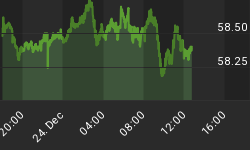Video streaming giant, Netflix Inc. (NASDAQ:NFLX), is just coming off a banner year whereby the company’s subscriber tally set new records, managing to once again shrug off intense competition from streaming rivals. Netflix gained 37 million new subscribers in 2020, easily besting its previous record gain of 28.6 million new subscribers in 2018, to finish the year with 203.67 million paid subscribers worldwide. Obviously, Netflix had Covid-19 and the stay-at-home trend to thank for the massive growth as consumers sheltering at home turned to streaming entertainment in droves.
But with economies around the world gradually re-opening, hawk-eyed investors are watching for signs of weakness in the company’s latest subscriber trend.
But here’s the bad news: People are becoming finicky about their video streaming services.
According to the 15th annual Deloitte media trends report, 82% of respondents are paying for video streaming; however, the average subscriber now has four paid video streaming services, down from five in October as people are becoming more selective now that the pandemic has eased somewhat.
Significant churn
Kevin Westcott, Deloitte’s vice chairman and U.S. tech, media, and telecom leader, has just told Fortune that streaming services are recording significant churn, meaning the subscriber dropout rate is alarming. Before the pandemic, churn was about 20% but jumped to 37% from October 2020 to February 2021 with the majority of new subscribers canceling their new services once the free trial period ends (30 days for Netflix).
How bad is the current churn? Very bad: According to Westcott said, the current churn is the highest the company has ever recorded in the history of its survey.
Video streaming platforms do not typically report churn, so don’t go looking for Netflix’s latest 10-Q hoping to find some clues.
Feeling the heat
Investors who were expecting Netflix to maintain its crazy subscriber growth clip for several more quarters could be in for a rude shock.
Netflix says it expects to add 6 million new subscribers in the first quarter of the current year, good for three percent Y/Y growth but a far cry from the 15.8 million subscribers that the company added in Q1 2020 when the lockdown began.
Netflix acknowledges that it needs to find ways to hook new subscribers in order to limit churn, with plans such as offering exclusive content, like the 500 titles and weekly release of originals, now viewed as inadequate.
The big problem here is that investors are becoming a lot more discerning, and want to know how many of those millions of new subscribers stick around long enough. Look at it this way: Supposing a streaming service with a monthly subscription of $10 per month pays $200 to acquire a subscriber who cancels after only three months, the company ends up losing money.
But Westcott has predicted that the attention is now going to shift to customer retention.
Netflix is scheduled to announce Q1 earnings on Tuesday, April 20th, after market close.
Wall Street has a consensus EPS estimate is $2.98 (+89.8% Y/Y) for the company and the consensus revenue estimate is $7.13B (+23.6% Y/Y).
Analysts expect Netflix to report streaming revenue of $7.07B, with paid monthly ARPU of $11.35. Operating income is expected to clock in at $1.78B with an operating margin of 25%. Meanwhile, free cash flow is projected to be $216.2M.
The bulls, however, can take comfort in the fact that over the past 12 months, NFLX has beaten EPS estimates 75% of the time and exceeded revenue estimates by a similar margin. Further, NFLX has received 23 upward revisions and 0 downward revisions over the last three months while revenue estimates have been revised upwards 20 times and downwards just 2 times over the timeframe.
By Tom Kool for Safehaven.com

















